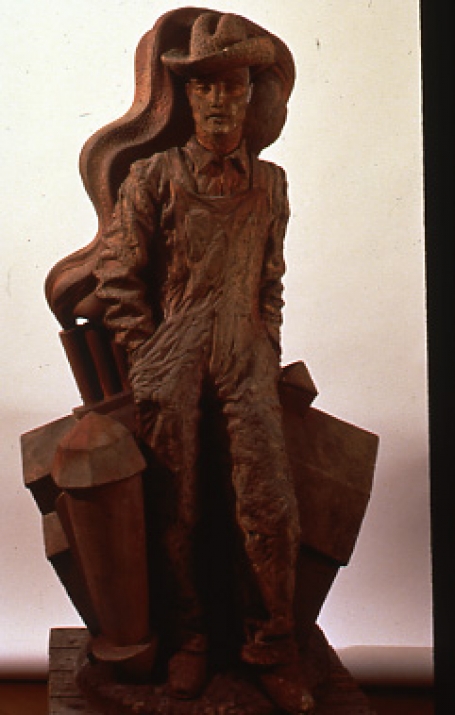
[1/11] Waylande Gregory, Factory-farm Worker, 1939, earthenware, 56" x 37" x 37", centerpiece to a commission from General Motors at the 1939 World's Fair in NY.
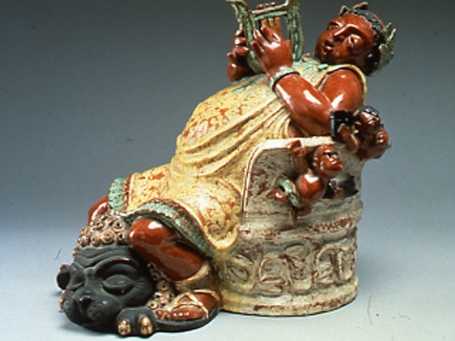
[2/11] Victor Schreckengost, The Dictator, 1939, glazed ceramic, 15 3/8" x 20 3/8" x 3/8", shows the dictators at the start of World War II, Stalin, Mussolini, Hirohito and Hitler as cupids flying around a representation of Caesar.
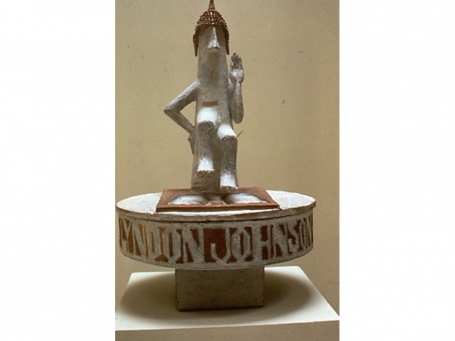
[3/11] Gerry Williams, The Stepping Down of Lyndon Johnson, 1970, stoneware, 20" x 30", during the primaries following Johnson's presidency that perpetuated the Vietnam War the anti-war Democrats fielded Eugene McCarthy as a candidate opposed to the war. As a consequence of the shift of support Johnson was forced to step down February 1968. The image and title also refer to Buddhist statuary where the Buddha is shown leaving his footprint in the earth as he departs.
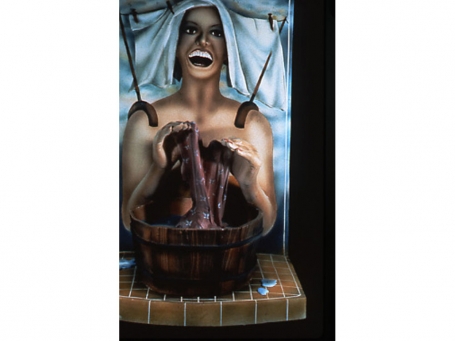
[4/11] Patty Warashina, Wash n' Wear, 1976, clay, underglaze, 27" x 16" x 16", shows a woman as a psychological portrait, in the stereotype role of laundress, washing by hand, her shoulders supporting the clothesline while displaying a force expression of happiness and fulfillment.
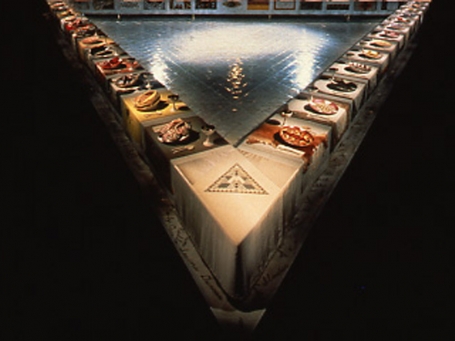
[5/11] Judy Chicago, The Dinner Party, 1979, mixed media, 48' x 48' x 48', conceived as a tribute to prominent women through history whose contributions to culture and society have traditionally been overlooked. The installation piece was a collaboration of many different artists under Chicago's direction. There are thirty-nine plates and nine hundred and ninety nine names on tiles commemorating actual and mythical women.
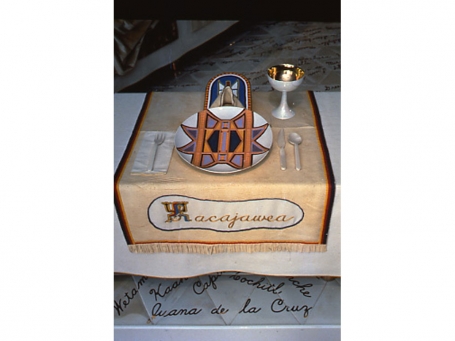
[6/11] Close up of Judy Chicago's The Dinner Party, 1979.
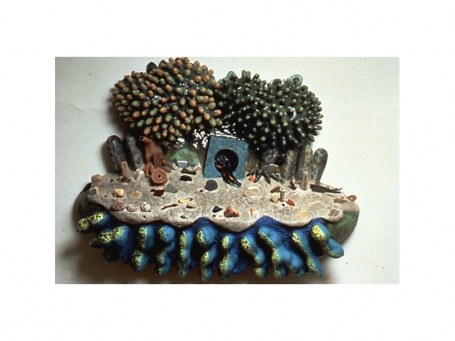
[7/11] Mary Jo Bole, Cleveland Beach Scene: collection holder, 1986, terracotta, 36" x 44" x 15", a sewage outlet pours effluence onto the sand where there is a consequent accumulation of natural waste and urban debris.
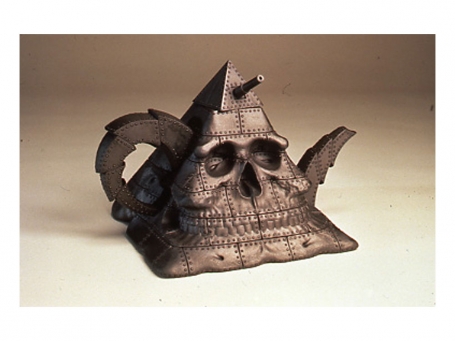
[8/11] Richard T. Notkin, Pyramidal Skull Teapot: military intelligence I (-yixing series), 1989, Stoneware, luster, 6" x 9 ¾" x 7", the skull symbolizes intelligence wasted and misdirected and consequently leading to death.
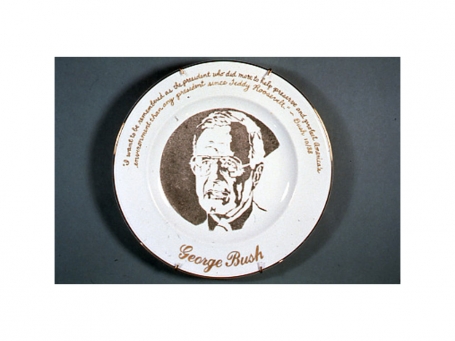
[9/11] Kim Abeles, commemorative smog plates (George Bush in 40 Days of Smog), 1991, particulate matter (smog and soot) on porcelain, diameter: 9", text reads: "I want to be remembered as the president who did more to help preserve and protect America's environment than any president since Teddy Roosevelt' Bush 10/8." Since the worst of our air can't be seen, Smog Collectors are both literal and metaphoric depictions of the current conditions of our life source." (Abeles)
[10/11] Matt Nolen, Apothecary Jar No. 2: Ozone, 1991, porcelain, 13" x 8" x 7", "Inspired from 16th century Italian apothecary jars, or albarellos, the forms for this series were chosen because of their use as containers for medicinal substances. This reference and its attendant associations support the conceptual thrust of the imagery which is related to contemporary issues of healing and medicine, and the attributes that underlie and empower those issues" (Nolan)
[11/11] Leslie Lee, Brave Love, 1992, ceramic, paper, electric light, paint, 22" x 18" x 18", this piece depicts two gay men, of different races, embracing inside a room that is surrounded by matches. This refers to the precarious defeat of Measure 9 in Oregon which, if effected, would have put end to legal protection for gays and lesbians in the event of them being discriminated against on the basis of their sexual orientation.











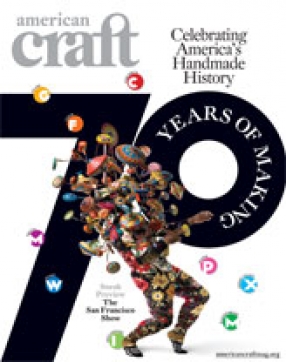



Post Your Comment
Fields in bold are required. Your email address is required but not published. Please enter the five digit code as it appears in the text field on its right.